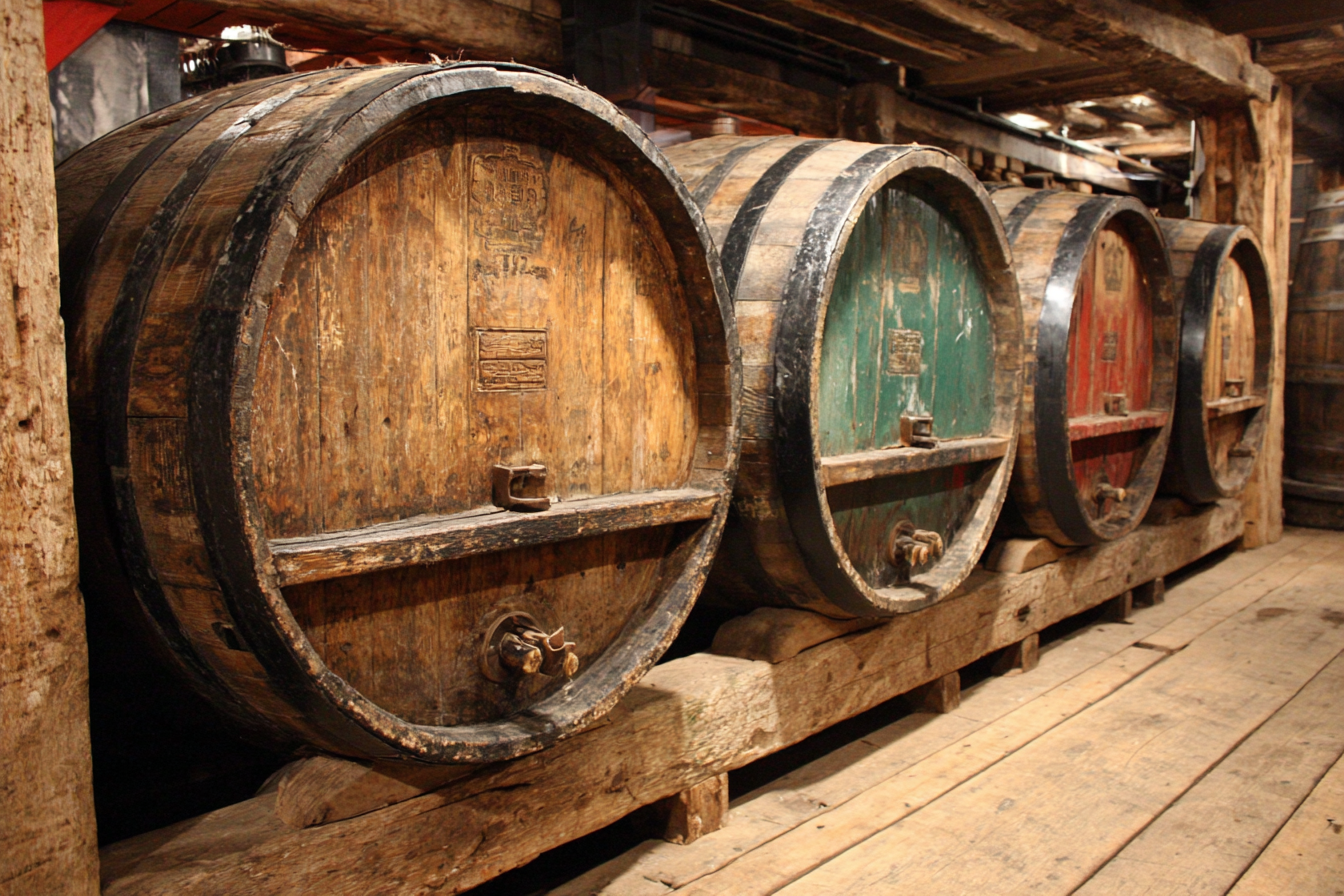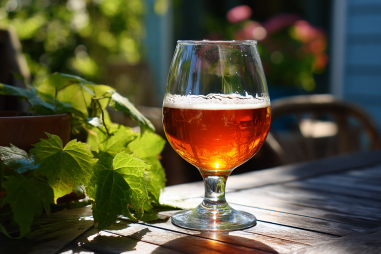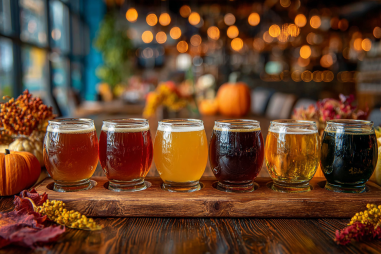Wood-aged stouts offer an intriguing glimpse into the intersection of tradition, craftsmanship, and innovation within the brewing world. From their humble beginnings in wooden casks to the experimental barrels employed by today’s craft brewers, these rich, complex beers have carved their own special niche. Let’s journey through the history of wood-aged stouts, exploring where it all started, how the techniques evolved, and why this style has become a beloved fixture in modern craft beer culture.
Origins of Wood Aging in Brewing
The practice of aging beer in wood has its roots deep in brewing history, dating back centuries before the modern beer industry took shape. Long before stainless steel and modern fermentation tanks, wooden barrels were the primary vessels for storing and aging beer. Brewers discovered that these oak barrels not only helped preserve the beer but also lent distinct flavors and aromas through slow oxidation and interaction with the wood.
In the early days, wooden barrels served practical purposes: they were durable, reusable, and ideal for transporting beer over long distances. The porous nature of wood allowed subtle exchanges with the air, softening and evolving the beer inside. This aging process enhanced certain beer styles, especially those that benefited from maturation like stouts, porters, and ales.
Early Examples of Wood-Aged Stout
Though stouts as a defined style originated in the 18th century from porters, which themselves were strong dark ales, it wasn’t long before brewers experimented with aging darker beers in wooden casks. Historical records from the 18th and 19th centuries mention stouts and porters being transported and sold from wooden barrels, during which time they developed richer, deeper profiles.
One of the earliest known examples lies in the tradition of “barrel-aged porters and stouts” that were shipped in oak casks. These beers often enjoyed extended aging either naturally due to long storage periods or intentionally by brewers looking to impart unique flavors. The result was a smoother, more complex stout with notes of vanilla, toast, and even hints of spirituous character from residuals in the wood.
Evolution of Aging Techniques Through History
As industrialization transformed brewing, the widespread adoption of metal vessels and refrigeration in the late 19th and early 20th centuries reduced reliance on wood. Yet, the tradition of wood aging persisted in certain circles, especially for specialty brews. Brewers experimented more deliberately with the type of wood, barrel size, and aging duration to achieve specific flavor outcomes.
In the 20th century, wood aging saw renewed interest with the rise of strong, aged beers in Europe. Belgian breweries, for example, mastered maturation in oak foeders that highlighted complex sour and spicy characteristics. Although stouts weren’t always the primary focus, dark ales benefitted from such aging techniques, which slowly gained hobbyist attention worldwide.
During this period, brewers began to understand the nuanced impact of factors like:
- Wood species (commonly oak, but also chestnut or cherry)
- Barrel toasting or charring levels
- Previous contents of barrels (wine, whiskey, brandy)
- Aging environment such as humidity and temperature
This gave rise to a more artful approach toward aging, turning it from mere storage into a key part of a beer’s profile creation.
Influence of Barrel Types and Spirits
One of the defining enhancements to wood-aged stout came from the increasing use of barrels that previously held spirits or wine. The craft brewing wave of the late 20th century revitalized wood-aging by embracing barrels from bourbon, whiskey, rum, port, sherry, and even tequila. Each type of barrel imparts its unique character:
- Bourbon barrels: Often impart rich vanilla, caramel, oak, and smoky notes that complement roasted malt flavors.
- Whiskey barrels: Add layers of spice, oak tannins, and sometimes a hint of peatiness depending on the whiskey.
- Port and sherry barrels: Introduce fruity, nutty, and wine-like complexity that can balance stout’s bitterness.
- Rum barrels: Bring tropical sweetness and molasses undertones.
Utilizing these barrels transformed many wood-aged stouts into multi-dimensional experiences. The interplay between stout’s natural coffee and chocolate notes with the lingering influence of the barrel’s previous contents created novel flavor landscapes that excited both brewers and drinkers alike.
Rise of Wood-Aged Stout in Contemporary Craft Brewing
The resurgence of wood-aged stouts is closely linked to the explosion of craft brewing culture starting in the 1980s and gaining momentum through the 2000s. As craft brewers sought to differentiate their beers and tap into consumer interest for unique, artisanal products, barrel aging became a natural playground for experimentation.
Wood-aged stouts took center stage as one of the most expressive craft styles, offering brewers a canvas to highlight patience, balance, and complexity. Small and large breweries alike began dedicating barrel-aging programs specifically to stout and imperial stout varieties. These brews often became limited releases or special editions, highly sought after for their depth of flavor.
Today, many craft breweries maintain extensive barrel inventories and use a mix of new and used barrels to age their stouts, often blending multiple barrels to perfect their recipes. Wood-aged stouts have garnered huge followings at festivals, competitions, and in beer collector communities.
Notable Milestones and Pioneers
The modern era of wood-aged stouts features several key breweries and individuals who pushed the style’s boundaries and popularized it across the globe:
- Goose Island Beer Co.: Pioneered the widespread release of Bourbon County Brand Stout in the 1990s, one of the first wildly popular bourbon barrel-aged stouts and a benchmark for quality and complexity.
- Founders Brewing Co.: Built on the bourbon barrel-aging tradition with their famous Kentucky Breakfast Stout (KBS), blending a robust stout with deep bourbon and vanilla influences.
- Russian River Brewing Company: Known for innovative barrel-aged beers that pushed wood aging beyond stouts, but whose success helped bring wider attention to barrel-aged craft beers.
- Individual craft brewers: Many homebrewers and small craft brewers experimented early on, driving creativity that sparked wider adoption and evolution of wood-aged stout globally.
These milestones helped legitimize wood-aged stouts as a distinct style and encouraged a new generation of brewers to push aging boundaries.
The Legacy and Future of Wood-Aged Stout
Wood-aged stouts embody a beautiful blend of tradition and innovation. Their history reminds us that beer is not only a beverage but a living craft shaped by time, environment, and experimentation. The legacy of wood aging lies in its ability to nurture complexity and storytelling — from the earliest wooden casks to the newest tech-enabled barrel-aging schemes.
Looking ahead, wood-aged stouts will likely continue to evolve with trends such as:
- Experimentation with new types of barrels and hybrid aging methods
- Collaboration between distillers and brewers for unique barrel finishes
- Focus on sustainability and barrel reuse to reduce environmental impact
- Refinement of blending techniques to balance boldness with drinkability
As consumers seek beers that offer more than simple refreshment, wood-aged stouts stand poised to satisfy curiously adventurous palates. Their rich history and dynamic future invite us all to savor not just the beer, but its story — one wooden barrel at a time.







